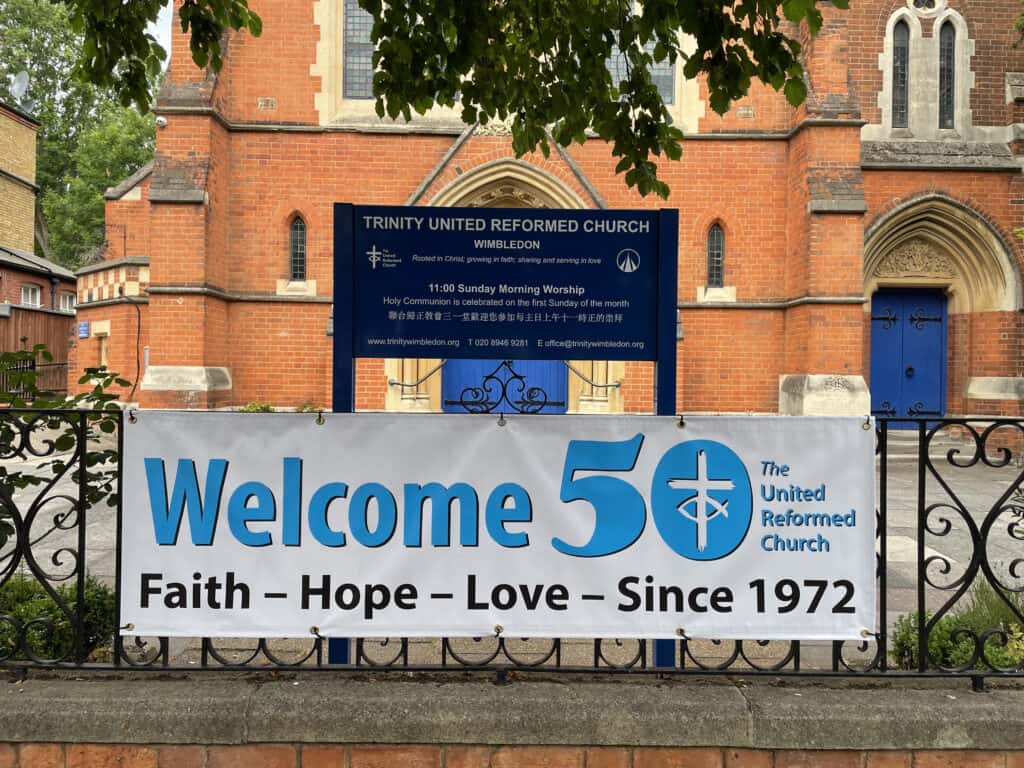Rail strikes have forced the United Reformed Church (URC) to postpone the celebration of its half-century this month.
The decision to postpone was taken with “the heaviest of hearts” after the church learnt that scheduled industrial action had been revised and would coincide with its jubilee.
A statement on the church’s website says: “After close to three years of planning, this postponement is so deeply disappointing, but we want the URC to celebrate its jubilee properly, with all who want to take part.” A new date is yet to be announced.
The URC came into being on 5 October 1972, when the decision of two denominations — Congregationalists and English Presbyterians — to join together was recognised by an act of parliament.
The aim and ethos of the URC, which also welcomed the Churches of Christ to its union in 1981, followed by the Congregational Union of Scotland in 2000, is to be “intentionally outward-looking”.
The church’s website states: “We don’t all agree about everything, and sometimes agree to disagree, but we are committed to being a family of churches together.”
The occasion was a “big deal”, according to the Rev Michael Hopkins, clerk to the church’s general assembly.
Before the union, there had been “an on and off conversation for about 40 years”, he told the Religion Media Centre. “The traditions that were coming together had been around for 500 years before that,” he said. “They both stem from the events of the Reformation in the early 16th century.
“Presbyterians represent the centralised way of being a reformed church in that they had a general assembly that made all the decisions, and Congregationalists were governed almost entirely within each congregation. They were both part of the worldwide family but they were quite different churches.”
The significance of the union — the first of its kind in the UK — cannot be understated, Dr Hopkins says. “The argument for coming together was a religious one in that people came to believe it was what God wanted them to do. They could see that they believed the same kind of things about God and they believed enough of the same kind of things about the church to try to find a way to make that work in a union, which I think has been very successful.”
The separate churches had not been evenly spread around the country, Dr Hopkins explained. “People saw they could do more together and it strengthened how people were able to do the work of the church mission and outreach.”
The two denominations started the process in the 1960s when they agreed upon a theological statement as a basis for the union. Once they made the decision, they needed an act of parliament and that took some months to work its way through.
The two met at Methodist Central Hall in Westminster in the morning of October 5, while Westminster Abbey later hosted a uniting service involving both the Archbishop of Canterbury and the Cardinal of Westminster. “That was actually broadcast on the TV by the BBC. It was a big deal,” said Dr Hopkins.
In some ways, though, he feels the jubilee is a bittersweet affair. “The people who formed the URC didn’t expect it to still exist by this point. At the time there was a great deal of enthusiasm about church union and at that time everybody thought there would be another union with other churches coming along very quickly.
“They thought it was the first step in a bigger process and in that sense they would be deeply disappointed that we still exist and haven’t united with other churches. There was a great deal of enthusiasm for church unity and there were conversations with the Methodist Church and the Church of England which were both very much bigger.”
The parameters could not be agreed upon, however. “People weren’t willing to make enough of a compromise. The Presbyterians and Congregationalists both had to give up things that they had treasured and the reason it worked was that they both were willing to do that.”
At the time of the union there were about 164,000 Congregationalists and 50,000 Presbyterians. The later additions were significantly smaller, with the 1981 union bringing in 5,000 people and 10,000 in 2000.
The picture today is rather different. The URC has 47,000 members in 1,300 congregations. But the outlook is not a bleak one, according to the Rev Fiona Bennett, the URC’s general assembly moderator.
She said: “Like most large mainstream denominations in the UK our membership is declining and so is the number of churches. We acknowledge that 42 churches closed at the last general assembly. As with most churches, the pandemic speeded things up, especially for some congregations that were really struggling.”
The closures are often related to the communities’ ageing profile or remote locations, but “there’s also incredible vitality”, Ms Bennett said.
Examples of this are in evidence around the country, she said, citing a community in Durham that supports people with complex mental health needs; another in Northallerton in North Yorkshire that promotes environmental causes; and a church in Edinburgh that is especially welcoming to Christians from the LGBTQ+ community.
The URC prides itself on its history as something of a “trailblazer”. It was the first mainstream church in the UK to ordain women ministers and in 2016 became one of the first UK denominations to allow same-sex marriages.
Welcoming the changes and transformation, Ms Bennett added: “We are now a church that’s online as well as in person. We are a church that’s black and white and coloured. We are a church that’s queer as well as traditional. We are four different denominations that have come together.
“Holding together diversity is something that we do. It isn’t always easy but we are committed to doing that.”

















